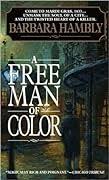My friend Gillian Polack, who enjoys writing food into her fiction, has told me I really need to do the same. In my fiction, I admit, characters only eat when they need to, and then there isn’t much description of the food or the eating. In my novel Wolfborn, there is a bit of food, in the form of a rabbit stew in one scene, when the hero comes in out of a storm, cold and soggy and really needing a hot meal. The characters get food supplies and do some hunting when needed.
I thought it might be fun to talk about food in other people’s fiction.
Gillian Polack is definitely the food enthusiast. Characters are at the table regularly in her novels. In my favourite, The Time Of The Ghosts, we meet three older women who live in Canberra and have a monthly banquet, to teach the homeless teenager they have taken in. One of the women is actually the mediaeval French fairy Melusine, who has allowed herself to age for obvious reasons. One of the stories she tells is how she civilised a wolf child, gradually, through food.
The Harry Potter novels are full of characters eating and drinking, whether at breakfast or dinner in the Great Hall or having midnight feasts in their dorms. The choice of food at mealtimes is such that the reader does wonder how they don’t leave Hogwarts the size of barn doors. As well as regular foods, there are those cultural to the wizarding world. Honeyduke’s sweetshop in the wizarding village of Hogsmeade is full of sweets you can only get if you are a member of the wizarding community. There are cauldron cakes - we’re never told if they are shaped like cauldrons or made in cauldrons. There is butterbeer, which is not high alcohol, except to House Elves.
Speaking of putting on weight, there is Kerry Greenwood’s 1920s detective Phryne Fisher, who somehow doesn’t. Phryne enjoys a good meal, and has a wonderful cook, Mrs Butler, who takes pride in creating art works in the form of meals. Our heroine is small and slender. She doesn’t have much for breakfast - coffee and croissants, or toast - but lunch and dinner are both three course delights. She often eats out. Each meal in a Phryne Fisher book is described in great detail.
She has another mystery series, set in the present day. Corinna Chapman is a baker, so we hear about her work in the bakery in much detail. Corinna also enjoys cooking. Most of her books have recipes at the end and, unlike other cosies, they are recipes you can actually use successfully. I enjoy making her French Onion soup and her muffins. All the Corinna Chapman novels end with the characters gathering for a feast.
Enid Blyton’s characters have picnics(the Famous Five), with “lashings” of ginger beer. Kerry Greenwood wrote a short story in which the Famous Five have to investigate the theft of all the village’s ginger beer supplies before they can have their picnic.
In the Faraway Tree books there are magical foods, such as Pop Biscuits(filled with honey) and Google Buns(with sherbet filled currants). Fans online have actually come up with recipes for both! Here is a link to a recipe for Google Buns. https://aliterarysupper.com/a-literary-supper/moonfaces-google-buns-the-faraway-tree
The author admits that currants seem to be rather too small to fill, so uses dried apricots. The sherbet is made from scratch.
Barbara Hambly’s Benjamin January series includes lots of food. As the novels are set in 19th century New Orleans, the food is culturally appropriate. Benjamin often stops in the street to buy delicious local pastries from street sellers and have them with coffee while discussing the current case with one of his friends, Irish musician Hannibal Sefton or police officer Abishag Shaw. Ben has a nephew who is training to be a chef and cooks at home as well. His sister Olympe, a herbalist, also cooks good stuff.
There was even a novel in which the murder victim is killed by a peanut allergy.
I have to admit, my mouth waters at the description of food in the Benjamin January books.
YA novelist Will Kostakis has Greek food in his fiction. He isn’t as much of a food person as the others I have described, but food does play a role. In my favourite of his novels, The First Third, there is a yiayia, a Greek grandmother, who cooks. At the beginning of the novel, the family visiting her in hospital bring huge amounts of food. Later in the novel, a girl who has just lost her grandmother regrets that she never learned from her how to make moussaka. The hero, Billy, buys the ingredients and takes her to his own grandmother to learn how.
There are so many great books with food in them! These are just a few. Do you have any favourites?



